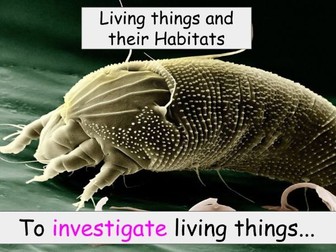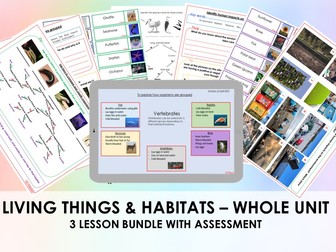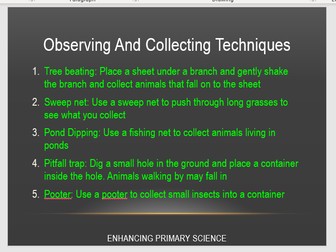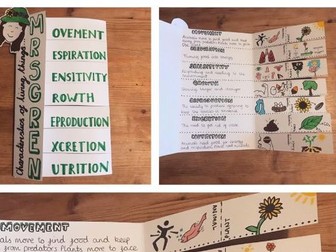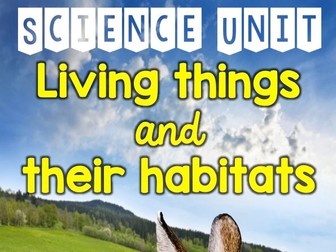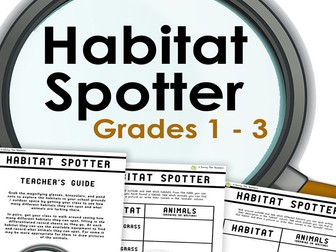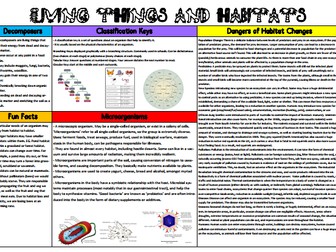
Year 4 - Living things and their Habitats
This bundle includes 11 full lessons to support the teaching of the two units: Living Things and Habitats in the Year 4 Science curriculum. Each lesson comes with the necessary resources and annotated slides to help guide the teaching at each stage. These lessons can be used to support the Hamilton Trust Science plans.
Lesson 1: To understand the characteristics of a living thing (Mrs Nerg)
Lesson 2: To ask questions about local habitats and record observations
Lesson 3: How are living things classified?
Lesson 4: To record the details of local living things using close observational drawings
Lesson 5: To create a large-scale work of art of an invertebrate
Lesson 6: To understand how to group living things
Lesson 7: To discuss environmental changes
Lesson 8: To consider some of the natural changes that could happen to an environment
Lesson 9: To create a graph to show temperatures recorded over time
Lesson 10: To understand the impact of environmental change
Lesson 11: To plan and implement positive changes to a local environment
This bundle also comes with 4 formative assessments to assess pupils’ learning at different stages (after lessons 3, 6, 9 and 11).
Total Number of Slides: 131
Lesson Plans Included? No - slides annotated.
Activities and Resources Included? Yes
#stressfreeteaching_dreamscheme
